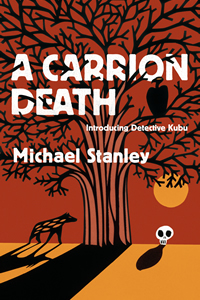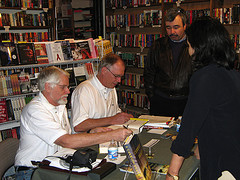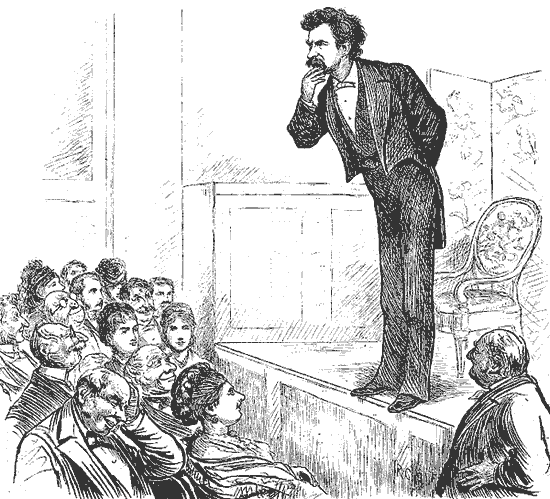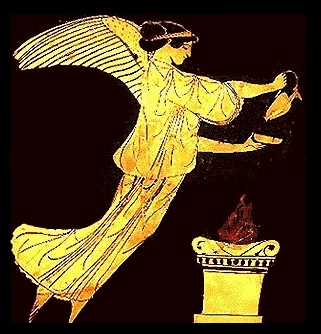
Here’s one more piece of evidence, if you needed it, for the Literary Times, They Are A-changin’ file: THE NEW YORKER has announced that it will not be running its second fiction issue of the year in favor of a “World Changers” special edition. Because it’s not as though any other magazine covers people who affect the world stage.
The magazine will continue to publish individual short fiction pieces weekly, of course. But I doubt that’s going to warm the foreboding chill in the hearts of short story writers everywhere at this policy change at one of the few magazines where their work was still received with open arms.
While I’ve already got you depressed into a stupor, allow me to make a quick foray back into my recent discussion of writerly tricks that send agency screeners’ hackles sky-high: hands up if you noticed the Millicent-baiting submission faux pas I made in the first paragraph. It’s a notorious professional readers’ pet peeve; I’ve seldom met a contest judge who did not complain about how common it is in entries.
Not seeing it? Well, here’s a hint: the second time it occurs within the first sentence of this post, it’s arguably justifiable.
If you immediately shouted, “Hey, Anne, there are a bunch of non-proper nouns that are nonetheless capitalized,” give yourself a gold star for the day. Capitalization for emphasis, much like quotation marks around words no one actually said, tends to rankle professional readers, and for good reason: technically, it’s not correct.
This may seem like a nit-picky concern, since headlines and advertising have dulled all of our senses of the oddity of a word’s being capitalized when it shouldn’t be — not to mention giving us a false sense that a capitalized word is more important than one whose first letter is in lowercase. But since that’s not actually true in English, gratuitous capitalization is simply distracting.
How distracting, you ask? Here’s how Millicent would read that first sentence:
Here’s one more piece of evidence for the Literary Times, They Are A-changin’ file: THE NEW YORKER has announced that it will not be running its second fiction issue of the year in favor of a “World Changers” special edition.
Not a pretty picture, is it? To be fair, all deviations from standard punctuation, grammar, and format tend to leap out at professional readers with this kind of intensity, but as this particular one is literally never necessary, it is more likely to be judged harshly, even to the point of being regarded as a symptom of creeping illiteracy.
It’s just not worth the risk of rejection– particularly in this case, where the joke doesn’t need the capitalization to work. Besides, with all of those words shouting for her attention, which is a Millicent intent upon making it through the stack of manuscripts and/or query letters on her desk more likely to concentrate upon, the underlying meaning of the sentence, or the fact that instead of using clever writing to make the point, the author (in this case, yours truly) simply chose to pretend that the important parts were a title?
I’m sensing some uncomfortable squirming in chairs amongst the capitalization- and quotation mark-lovers out there. “But Anne,” these dramatic souls cry, “I just love emphasis. Are you telling me that Millicent is going to look down her nose at my submission if I emphasize anything on the page?”
No, of course not — although I would be lying to you if I didn’t concede that there are plenty of professional readers out there who do feel pretty strongly that the writing itself, and not the punctuation, should let the reader know what is of paramount importance in a sentence. If a writer can’t convey importance in words, this stripe of Millicent believes, what is he doing writing books? Perhaps interpretive dance would be a more appropriate means of communication.
For every other professional reader, though, there is a recognized means of picking out emphasized words. In standard manuscript format (if you don’t know what that is, or if it’s news to you that such a thing exists, hie ye hence to the HOW TO FORMAT A MANUSCRIPT category on the archive list on the lower right-hand side of this page), the method of choice is italics:
“Hands off.” Artemis’ voice was quiet, yet the undercurrent of menace was clear. “That trout is mine.”
Makes the point, doesn’t it? And while we’re talking about making points, did anyone catch the correct use of another piece of punctuation we often see done wrong in print these days? No? Well, here’s that paragraph again, this time with Millicent’s pet peeve intact:
“Hands off.” Artemis’s voice was quiet, yet the undercurrent of menace was clear. “That trout is mine.”
Notice it that time? So would Millicent, and I assure you, it would set her teeth a-grinding. In English, a possessive apostrophe on a noun that ends in an s does not take a second s afterword.
And no, I have absolutely no idea why so many newspaper editors have decided otherwise in recent years; the strictures of proper grammar have not changed, after all. What has changed, I suspect, is the rise of the use of computerized spellcheckers that cannot tell the difference between Bob Harris’ coat and the Harrises’ family car. Or maybe we’ve all just seen the grammatically bizarre use of apostrophes to create plurals — as far as I know, the only noun in North America for which this is correct is the Oakland A’s, and that only because the mistake is in the actual proper name — that it no longer shocks us.
But trust me on this one: incorrectly used apostrophes, like gratuitously capitalized words, still shock Millicent the agency screener. And Maury the editorial assistant. And Mehitabel the contest judge. So much so that it’s not entirely unheard-of for the shock to kill off a submission or entry’s chances entirely.
Yes, proper grammar can matter that much in a submission. See why I keep urging all of you to read your manuscripts IN THEIR ENTIRETY, IN HARD COPY, and OUT LOUD before send them in?
A few hands have been patiently waving in the air for quite some time now. “But Anne,” these polite questioners ask, rubbing circulation back into their numb arms, “I’ve seen other sources state that italicization is wrong in manuscript submissions. Instead, they recommend underlining. Where do you get off, confusing me by implying that they are wrong?”
Wrong is perhaps too harsh a word for this advice. Seriously outdated and/or not applicable to book manuscripts or proposals would be closer to the mark, because underlining has not been the norm for the book-length submissions since the rise of the personal computer. (Since italics required a special kind of typewriter, underlining was the next-best substitute back when everyone was working with carbon paper.)
Or, in some cases, blithely unaware that magazine publishers and book publishers have different expectations, as short stories are in fact formatted differently from book manuscripts. Yet mysteriously few lists of formatting tips mention that salient fact, tumbling two (or more) sets of rules together indiscriminately.
Long-time readers of this blog, chant it with me now: before applying any set of rules to a manuscript, check very carefully whether those rules are actually appropriate to your type of manuscript at this point in literary history.
Trust me on this one: if you are submitting material to those involved in book publishing in North America, italicize for emphasis (and to indicate non-English words, so Millicent won’t mistake them for misspellings). Underlining will merely make Millicent mutter, “Well, here’s another one who’s stuck in 1950.”
A different set of hands just shot into the air, didn’t they? “But Anne,” these protestors-come-lately point out, “those aren’t the only legitimate uses for italics, are they? I thought that thought was always italicized in manuscripts.”
In a word, no. Thought is sometimes italicized in manuscripts — although, again, it would be remiss of me not to point out that many a Millicent, Maury, and Mehitabel out there feels that a writer gifted enough to deserve assistance into print or a blue ribbon should have the technical skills to be able to let the reader know that thought is occurring without resorting to formatting tricks. As in:
A likely story, Henrietta thought. How dare Frederick treat her like an idiot? For only an idiot would actually believe his absurd claim that he was late for dinner because a band of marauding third-century Huns had slipped loose from the space-time continuum and sacked his homecoming El train.
Still, what was the point of fighting about it? “Well, don’t let it happen again. Wash your hands; your dinner’s getting cold.”
That’s a section of text unlikely to disturb the sensibilities of even the most rejection-happy Millicent. Let’s take a gander at the same excerpt, formatted according to the thought-is-better-italicized school:
A likely story. How dare Frederick treat me like an idiot? For only an idiot would actually believe his absurd claim that he was late for dinner because a band of marauding third-century Huns had slipped loose from the space-time continuum and sacked his homecoming El train. Still, what was the point of fighting about it?
“Well, don’t let it happen again. Wash your hands; your dinner’s getting cold.”
Doesn’t really add much to the scene, does it? En masse, the italics are just kind of distracting — which is precisely why a Millicent who dislikes italicized thought (see tirade about what a talented writer should be able to do with wordplay, above) would automatically judge this passage more harshly.
But if your submission or contest entry happened to land on the desk of a Millicent who thought italicized thought was fine (or who worked for an agent who habitually represented books in genres where italicized thought was common), chances are that the funky type wouldn’t affect her perception of the paragraph at all, as long as the device were applied consistently throughout the submission.
How can an aspiring writer know in advance which kind of Millicent will be screening his submission? Good question; 99% of the time, the writer will have no idea.
Personally, I always advise my clients to err on the safe side, reserving italics for emphasis and foreign words, but a good rule of thumb is to follow the norms for one’s chosen book category — with which, lest we forget, any agent worth his commission is going to expect a marketable client to be intimately familiar. There’s just no substitute for reading up.
Generally speaking, though, the more literary the book category (i.e., the more highly educated its presumed readership), the less likely authors are to italicize thought automatically. Also, context matters: if a shift into italics is likely to jar the reader out of the ongoing action or argument, you might want to think about eschewing it.
Whichever italics route you select, make sure to apply it absolutely consistently — and logically — so it appears to be a deliberate authorial choice. Here’s the same paragraph in a format that would send even the most italics-tolerant Millicent reaching for the form-letter rejection pile:
A likely story, Henrietta thought. How dare Frederick treat me like an idiot? For only an idiot would actually believe his absurd claim that he was late for dinner because a band of marauding third-century Huns had slipped loose from the space-time continuum and sacked his homecoming El train. Still, what was the point of fighting about it? “Well, don’t let it happen again. Wash your hands; your dinner’s getting cold.”
See the problem — or rather the problems? First, if italics = thought in this manuscript,
A likely story, Henrietta thought.
is redundant, isn’t it? Why tell the reader twice that Henrietta is thinking?
Second, since all of the text in this section is presumably going on within Henrietta’s head, why is some of it italicized, and some not? Is the non-italicized sentence an explanatory footnote on what she is thinking?
Or — and this is more likely to be Millicent’s conclusion, I’m afraid — does the author merely not understand the difference between thought, which is often amorphous, and thinking words? If so, does the selectively italicizing writer believe that italicized thought is the same thing as a quote, just not spoken out loud, and different in some way from paraphrased thought? Is all of this fancy formatting extraneous to the story, or some kind of subtle code that the reader is expected to crack? If it’s the latter, is this storyline or argument really worth the effort of cracking it?
See how many question marks a submission or contest entry avoids if it doesn’t embrace the convention of italicizing thought? Wouldn’t you rather that Millicent got swept up into your compelling premise, your engaging plotline, and/or your magnificent writing, instead of worrying her pretty little head with extra-textual issues like this?
No, that isn’t a trick question. It’s a trick situation, of the what-color-am-I-thinking variety. All Millicent wants is for submitters to give her precisely what she wants to see.
If only she, the other Millicents, all of their collective bosses, every single Maury and all of their bosses, and all of the Mehitabels could agree upon what that is. Until they do — and I wouldn’t advise any aspiring writer to hold his breath — the best tactic is to polish one’s manuscript as much as humanly possible and keep submitting until one finds a Millicent who shares one’s idea of what a well-written manuscript is.
Not very inspirational, I know. But much, much more helpful a strategy in the long run than wasting one’s energies trying desperately to discover that mythical single writing formula that everyone currently working in the biz will instantly recognize as brilliant. Or driving oneself crazy, trying to reconcile all of the wildly contradictory writing and submission advice out there.
I can only repeat: learn the norms of your book category, do your homework about standard format, find what makes sense to you, and apply it consistently.
Wow, I really went to town there, didn’t I? I had planned for my point about italics to be merely the opening act for today’s installment on self-editing for pace, but as I see there’s still a great big elephant waiting in the wings, I might as well devote the rest of this post to putting it through its paces.
And what’s the elephant in the room, you ask? Let’s ask the surging masses who have had their hands up since I first mentioned italics: “But Anne,” they shout as one, “I constantly see entire sections of books in italics. I think that looks cool. But if I reproduce that style in my manuscript, will it send Millicent’s internal question-generator into overdrive?”
In a word, yes. In several words, yes, but not in the manner you might think.
Before I explain how and why, let’s make it clear what the surging masses are talking about, shall we? Here’s an example of what lovers of extensive italicized sections typically send across Millicent’s desk:

We’ve all seen this type of opening in published books, right? So what problem could Millicent possibly have with a first page that looked like this?
Problems, actually. In the first place, such an opening is likely to strike her as unprofessional — Millicent knows enough about how publishing works to be aware that few those published books that open with hunks of italicized text would have looked like that at the manuscript stage. The editor, not the author, decides how a book’s text will appear on the printed page.
But that’s not the reason 9 out of 10 Millicents encountering a submission like this will simply skip the italicized part and start reading on line 1 of the normal text. They’ll not read the italics because they know from experience that the story’s not starting there — the bit in italics is probably from another part of the plotline, or in a different voice than the rest of the opening chapter. It might even be a quote from another writer, and thus not particularly likely to give her any help in deciding whether the manuscript in front of her is worth passing on to her boss.
In short, the italicized part might as well not be there. Sorry to be the one to break it to all of you italics-huggers, but presented as it might be in a published book, it’s a waste of page space.
While your hearts are already broken, is this a good time to mention that Mehitabel the contest judge’s reaction to this type of page is likely to be even worse? I once saw an excellent entry actually disqualified because its two different voices were presented on the page differently — one in italics, one in plain text.
Was this outcome the knee-jerk reaction of the kind of italics-hating Mehitabel I mentioned above? No, because I happened to be the judge in question, and I don’t particularly mind italics, as long as they are used correctly. I had no choice, you see: the contest’s rules forbade boldfacing or italics.
That’s not all that unusual, you know. Most serious literary contests have very strict formatting rules; quadruple-check typeface requirements before entering.
So how would a savvy submitter present an opening like this in a manuscript or contest entry? By assuming that any professional reader would be intelligent enough to figure out the two different timeframes without the visual cue of italicization. Happily, standard format has a perfectly good tool for alerting a professional reader to a section break, the skipped line:
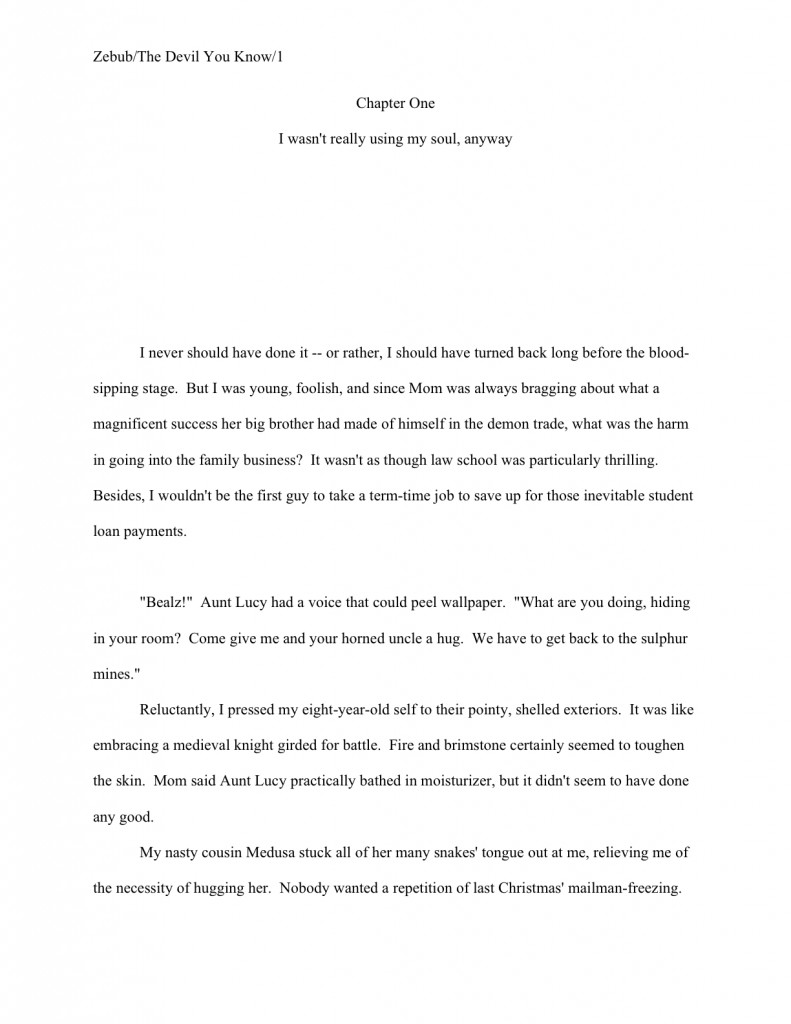
Not all that confusing, is it? The skipped double-spaced line makes it perfectly clear that the second paragraph is not a continuation of the first, but the beginning of a new section.
The moral of the story: italics tend to be radically overused in submissions. Try giving ‘em a rest, and relying instead upon your good writing and the simple tools provided by standard format to save the reader from confusion.
Next time, I’ll harder to stick to our ongoing topic, I promise. Keep up the good work!






























